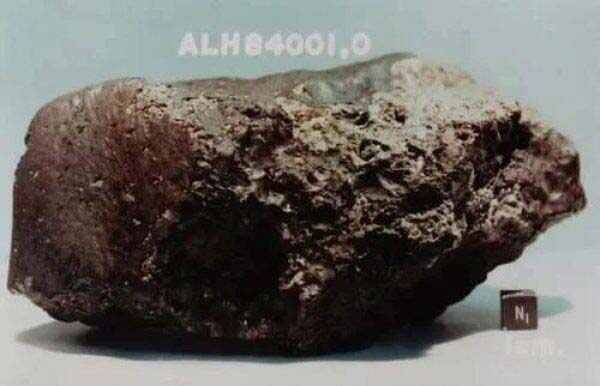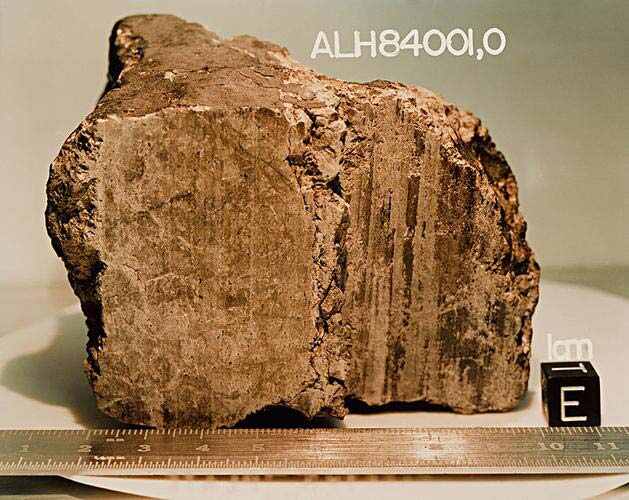The world's most famous meteorite: from Antarctica, 4 billion years old
Each meteorite is smashed by meteorites traveling at high speeds in the universe before it disintegrates at high speeds from the planet on which it is located. In the process of disintegration, there is inevitably melting and then condensation. During this process, the gases in the planet are incorporated by the meteorite, and then after the meteorite condenses, many small bubbles are formed in the meteorite. The gas in these bubbles is the gas of the planet.

The meteorite, number ALH84001, is a meteorite discovered by NASA in 1984 at Allen Ridge, Antarctica, and after scientists studied the isotopic composition of the gas bubbles within the meteorite, it was found to have the same isotopic ratios as those found on Mars, which suggests that ALH84001 came from Mars!

At the same time, research has found that this meteorite has a "long history", formed as early as 4 billion years ago, the same age as the origin of life on Earth, which is also one of the reasons why it has become the most well-known meteorite. The quest for meteorites is really our quest for the origin of life in our solar system. As of 2019, we have collected a total of 224 meteorites from Mars on Earth. These meteorites are of course extraordinarily valuable, but mankind can only dream of picking out a single ore from Mars that is most likely to contain signs of life and transporting it back to Earth.
Popular Articles
-
Treadmill PK elliptical machine, which is more fat burning?

-
 Why should men do more deep squats? How do you do a standard deep squat?
Why should men do more deep squats? How do you do a standard deep squat?Jul 06, 2025
-
 Excellent kitchen supplies recommended to give you a sense of well-being when cooking
Excellent kitchen supplies recommended to give you a sense of well-being when cookingJul 06, 2025
-
 Autumn Tonic Pork Ribs Soup with Loofah and Bamboo-Sun
Autumn Tonic Pork Ribs Soup with Loofah and Bamboo-SunJul 06, 2025
-
 These 4 causes can lead to dry eyes, have you fallen for them?
These 4 causes can lead to dry eyes, have you fallen for them?Jul 06, 2025
-
 These home goodies, do not recommend my conscience will hurt! Hurry up and arrange for your home!
These home goodies, do not recommend my conscience will hurt! Hurry up and arrange for your home!Jul 06, 2025







Comments
0